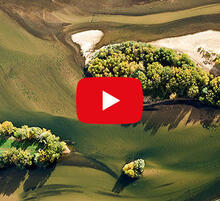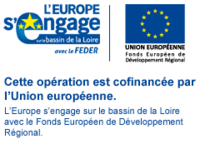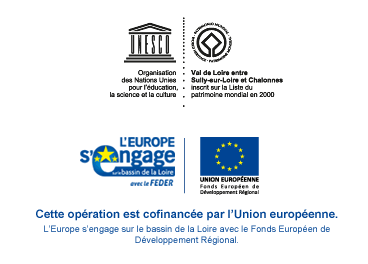- Home
- Act
- Vivre avec le fleuve
- Managing the water resource
Managing the water resource
Published on 13 October 2016 - Updated 16 December 2019
Managing the water resource involves controlling the impacts that activities and use of the resource have on aquatic environments and facilities. In this context, how can you align with existing policies for the integrated management of the water resource in the area? How can you take effective action in a bid to improve the water quality, protect aquatic environments and control water abstractions?
To know...
- La gestion de la ressource en eau s’inscrit, de façon globale, dans les enjeux environnementaux, hydrauliques, économiques et paysagers attachés au territoire du Val de Loire.
- La gestion de la ressource en eau est encadrée par le Schéma directeur d’aménagement et de gestion des eaux (SDAGE) et les schémas d’aménagement et de gestion des eaux (SAGE).
- La gestion de l’eau répond à des objectifs de suivi et maîtrise de la pollution, de protection de la qualité de l’eau pour la santé publique (baignade et potabilité) et de maîtrise de la consommation.
- La prise en compte du changement climatique devient incontournable.
Target set
by the SDAGE:
61% of water sources
to reach 'good status' by 2021
Link experiences
Be the first to share your experience: tell us
How to ?
The Water Management and Development Master Plan (SDAGE) Master Plan for Water Management and Development (SDAGE) is the main tool for implementing water policy. Defined at the scale of the river basin, this incorporates the environmental aims of the European Water Framework Directive (WFD).
Defined by the local water boards (CLE), water management and development plans (SAGE) are strategic planning tools which set out the aims of the SDAGE specifically as regards their local area.
Become familiar with existing tools
- See the applicable SDAGE and SAGE plans for the river basin and the communication tools designed for stakeholders
- Check out the dedicated websites, especially http://www.prenons-soin-de-leau.fr
- Check out the territorial centres of expertise, not least the University Centre of Expertise and Transfer (CETU) Innophyt (Tours' François-Rabelais University), which carries out research utilisation activities in the field of sustainable pest management
Roll out a 4-pronged strategy:
Improve water quality
To protect the environment and human health:
- reduce nitrate contamination, organic and bacteriological pollution
- control and reduce pesticide contamination and pollution owing to hazardous substances
Protect aquatic environments
- review watercourse developments (developments of banks, creation of channels, river sills, modification of the water flow pattern, destruction of wetlands, etc.) to reduce their impact on the aquatic environment (deterioration or disruption)
- protect wetlands and aquatic biodiversity
Control water abstractions
Improve water governance
- facilitate local governance and enhance public policy and territorial coherence
- set up regulatory and financial tools
- inform, raise awareness and encourage discussion

![Nouvelles Renaissance(s] 2023](/var/storage/images/val-de-loire-refonte/dossier-de-parametrage/pied-de-page/nouvelles-renaissance-s-2023/517479-13-fre-FR/Nouvelles-Renaissance-s-2023_image_largeur220.png)


 Lettre d'information
Lettre d'information
 Facebook
Facebook
 Flickr
Flickr
 Podcloud
Podcloud
 Dailymotion
Dailymotion
 Box
Box
 Slideshare
Slideshare
 Diigo
Diigo

